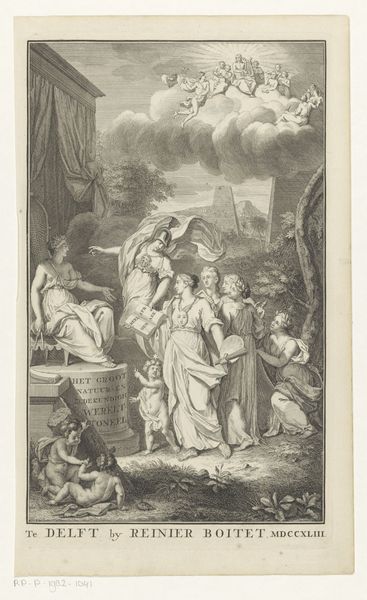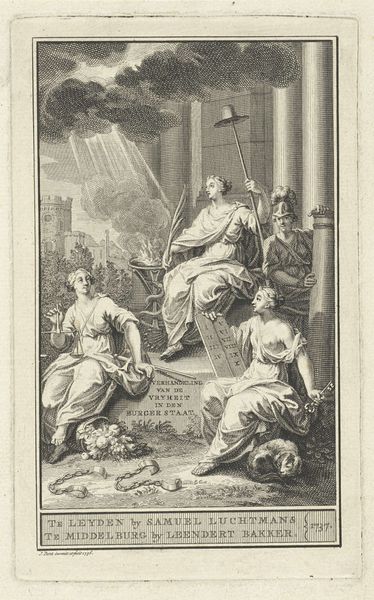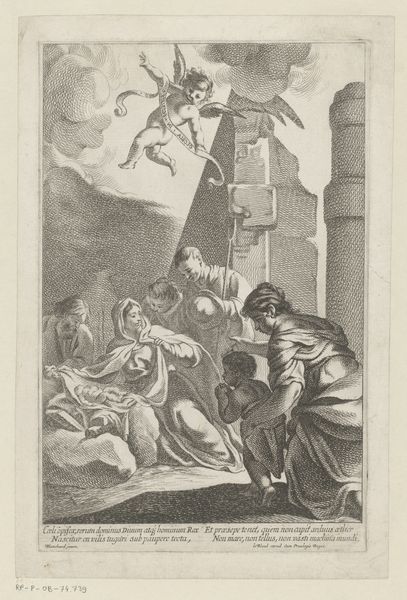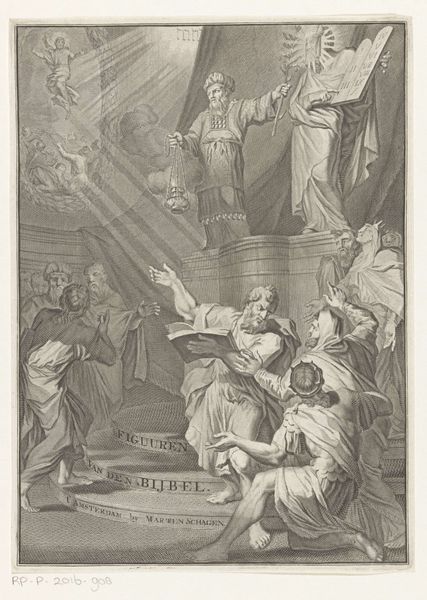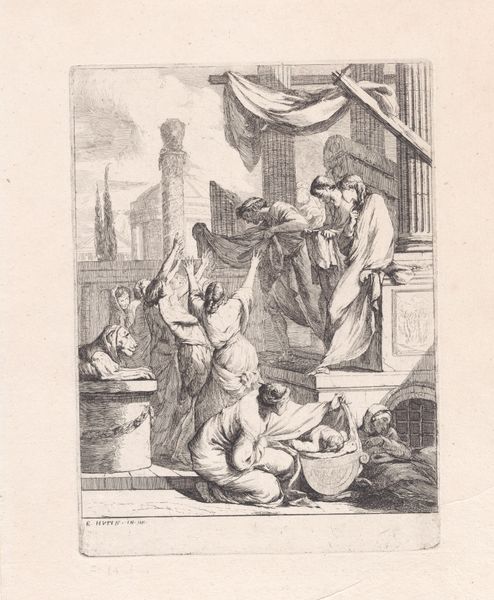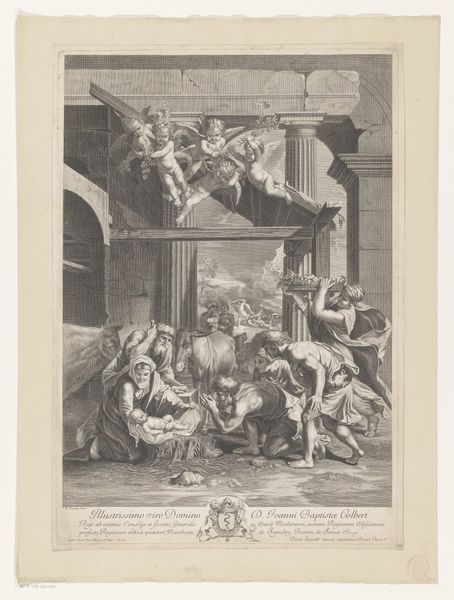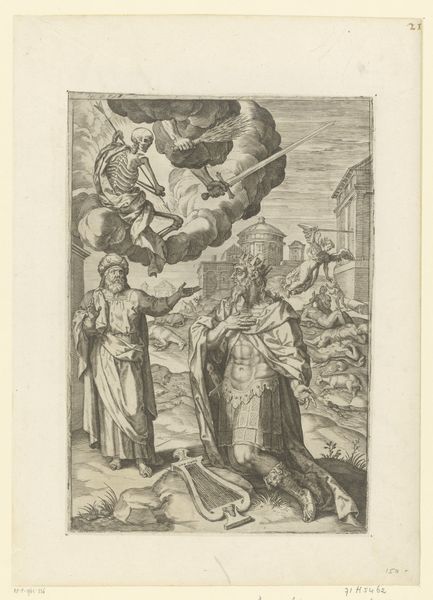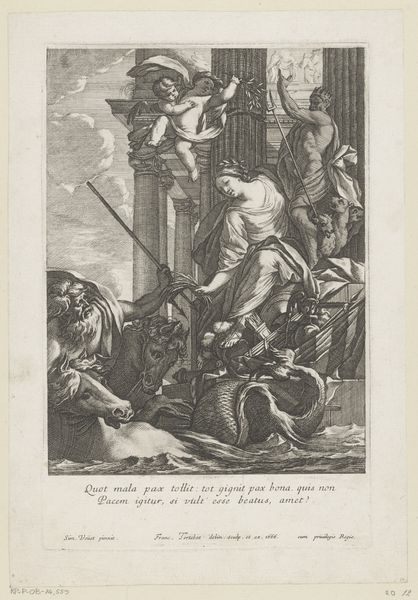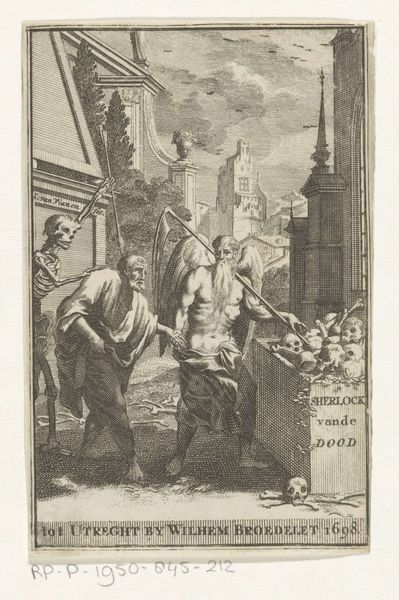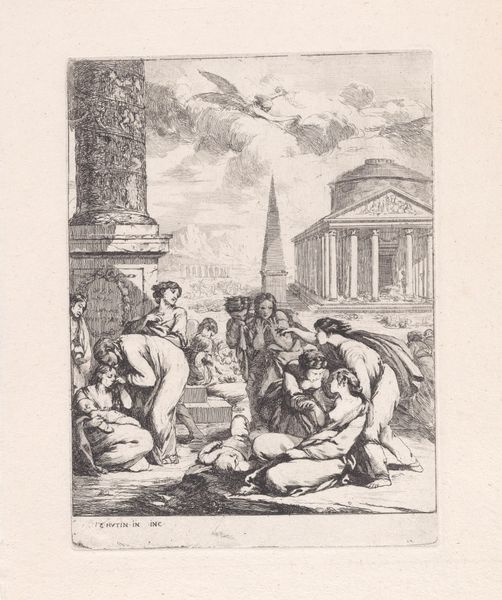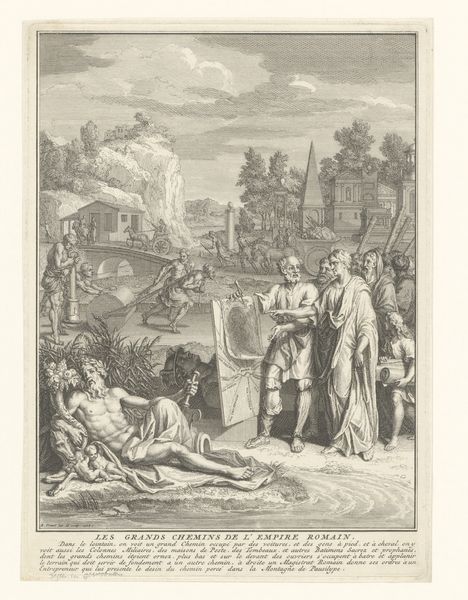
print, paper, engraving, architecture
#
narrative-art
#
baroque
# print
#
old engraving style
#
traditional media
#
retro 'vintage design
#
figuration
#
paper
#
line
#
history-painting
#
engraving
#
architecture
Dimensions: height 345 mm, width 221 mm
Copyright: Rijks Museum: Open Domain
Editor: So, here we have François Chauveau’s engraving, “Heilige Bruno laat de Grande Chartreuse bouwen,” which translates to “Saint Bruno Orders the Construction of the Grande Chartreuse,” dating somewhere between 1623 and 1676. It's incredibly detailed. What strikes me is the contrast between the figures in the foreground and the hustle and bustle further up, with the monastery taking shape. How do you interpret this work? Curator: Well, I see a powerful statement about the intersection of faith, labor, and social order within the context of 17th-century Europe. Chauveau’s choice to depict the physical labor involved in building the monastery – look at the men struggling with stones – brings the lives of the working class into conversation with the spiritual narrative of Saint Bruno. What does it mean to see labor represented here? Editor: It feels like the artist wants to show us all the layers of society that went into the process... Almost a celebration of it, maybe? Curator: Perhaps. But let’s consider the power dynamics at play. Who benefits from this labor? Whose narrative is being amplified? Saint Bruno, representing the church, is given prominence, while the laborers are largely anonymized, their individual stories subsumed by the collective project. Does that resonate with you in our current social climate? Editor: Yes, it does. It makes you question the price of "progress," even within seemingly righteous endeavors. Curator: Exactly. And the composition itself, with the monastery reaching towards the heavens, reinforces this hierarchical structure. It's not just about building a physical structure, but about building and maintaining a system of belief and power. The architectural elements – the arches, the precise lines – signify order, control, and the imposition of a specific worldview. The piece opens a critical space to explore the relationships between religious institutions and labor, and reminds us to question dominant narratives. What are you taking away from it now? Editor: I’m seeing the artist's ability to depict not just a historical event, but also the complex social dynamics at play. Thank you, it gives a fresh and modern perspective.
Comments
No comments
Be the first to comment and join the conversation on the ultimate creative platform.
